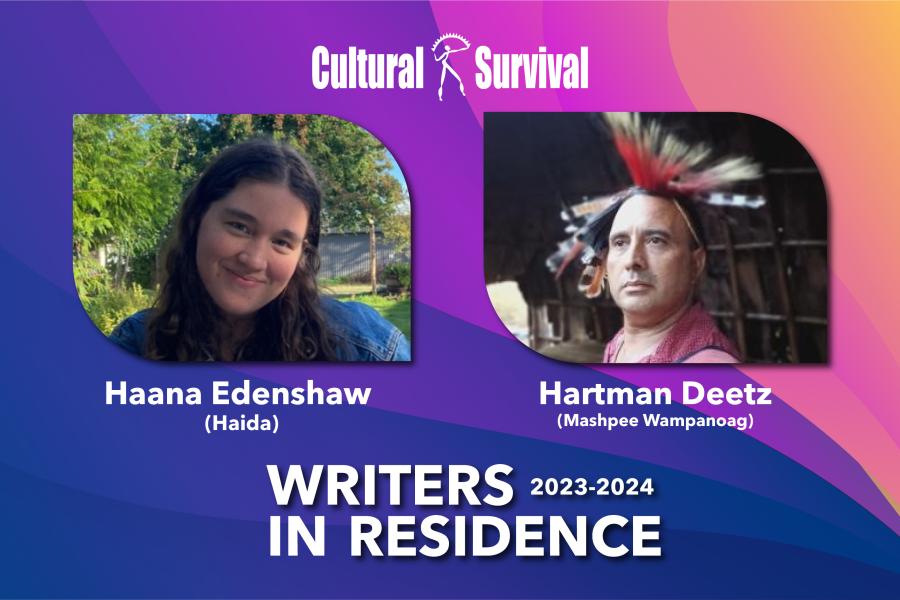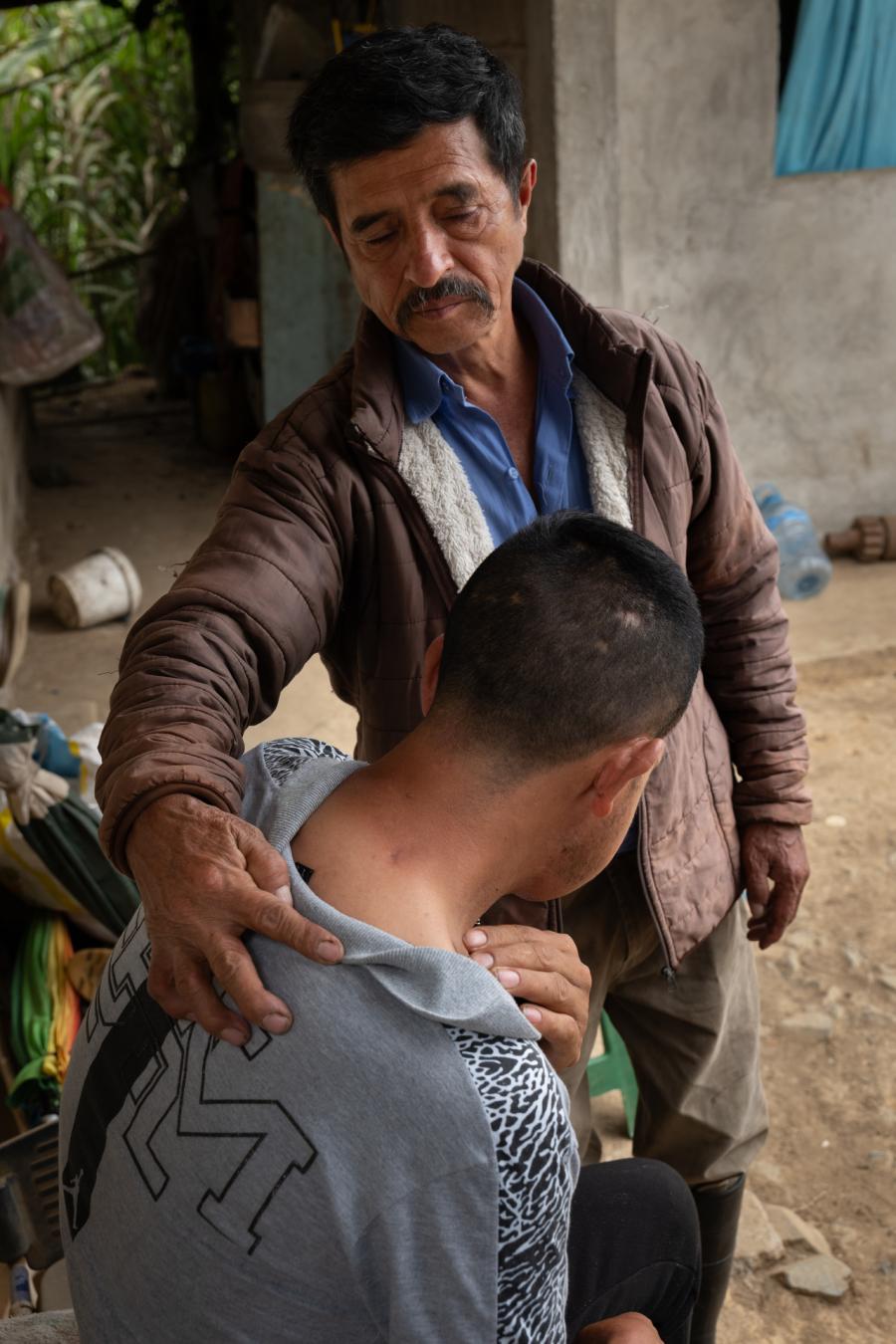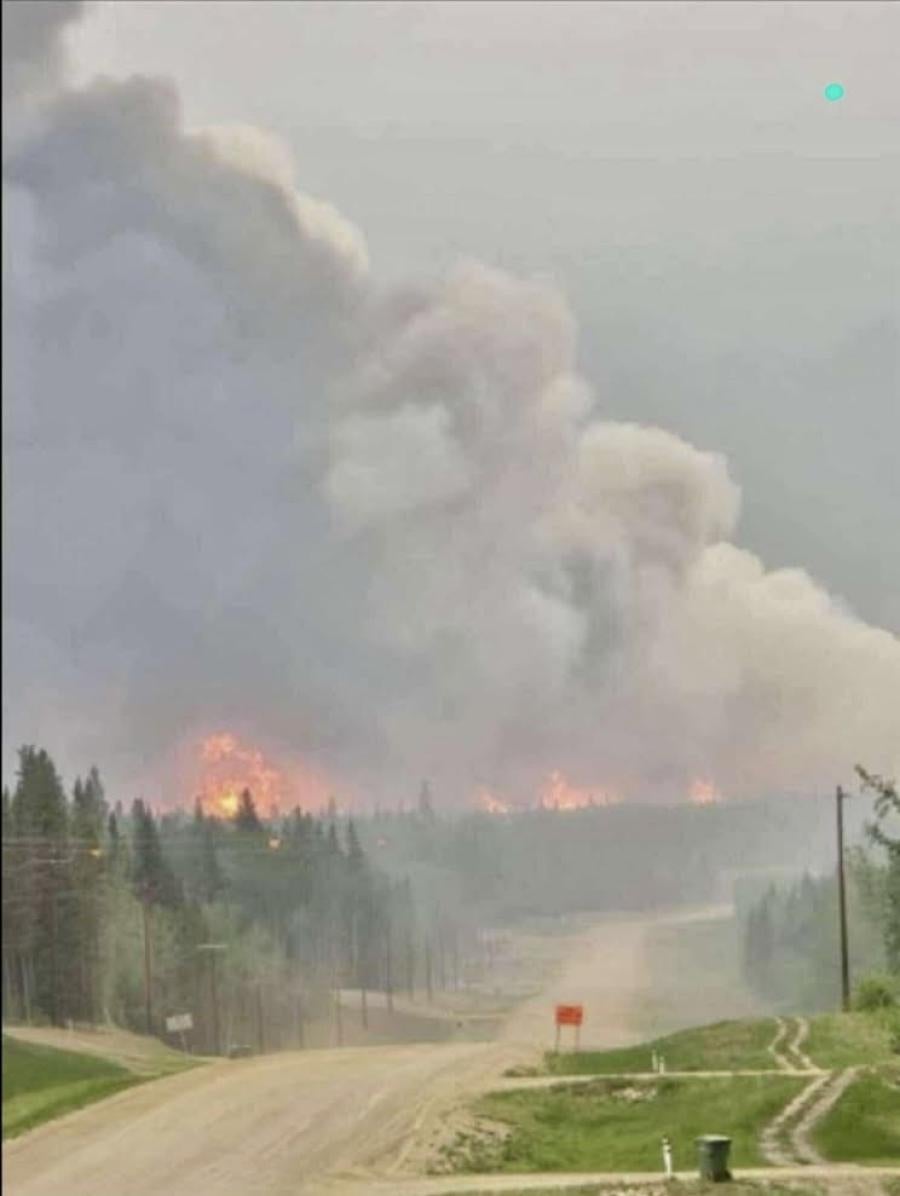Canada is the world leader in indigenous communications. The news media produced by or in consultation with indigenous people represent a broad spectrum of services in Canada -- from small-scale projects such as community radio and newsletters, to the pan-arctic, satellite-transmitted broadcast services of Television Northern Canada (TVNC). The effectiveness of news media can be seen in the energy and extent of the ongoing dialogue in the media between individuals and communities of the Canadian North. Although it originates in small, often remote communities, much of this dialogue can be followed from other locations on the Internet. The following discussion concerns the social and political impact of indigenous news media and the ethics of intercultural communication.
Journalists are not just purveyors of messages, they can help defuse violence and intolerance, or inflame it. They don't just distribute news, they are also responsible for how the stories are told and by whom. Northern journalists play a highly visible, and consequently influential role in daily life because there is little separation between journalists and other citizens in the small communities they serve.
In 1999, in Canada's eastern arctic, Nunavut will become an official political unit with the same status as the Yukon Territory and the Northwest Territories -- which have only slightly less power than Canada's provinces. Nunavut or `our land' in Inuktitut, the dominant Inuit language, was created after more than 20 years of lobbying by the umbrella organization for all Canadian Inuit, the Inuit Tapirisat of Canada (ITC). Its public government will represent all of its inhabitants, most of whom are Inuit.
Inuit have always been a tiny minority of the Canadian population. In Nunavut, however, they are an 85% majority. In the past, Inuit were governed from the outside by the federal government in Ottawa and the Northwest Territories government in Yellowknife. Today, the balance of power is rapidly shifting as Inuit become primary players in Nunavut's relationship to Canada.
There are two separate agreements to the Nunavut Agreement. The land claim agreement between the Inuit and the government of Canada is administered by the all-Inuit Nunavut Tunngavik Incorporated (NTI). The second agreement will establish a public government composed of all Nunavut's citizens-Inuit and Qallunaat, or `non-Inuit' populations alike, however, the government structure has yet to be determined. The Inuit-dominated Nunavut Implementation Commission (NIC), headed by Chief Commissioner John Amagoalik (sometimes called the `Father of Nunavut' for his active role in ITC's lobbying efforts), is charged with developing this structure. The NIC's function is temporary and will operate until three months after the 1999 inauguration of Nunavut, whereas NTI was established as a permanent institution. Because of the large Inuit majority in the region, almost all the key players are Inuit. A crucial part of the process creating the new government is the public dialogue and debate which takes place in the northern news.
Throughout the rest of Canada, mainstream media persist in exoticizing, romanticizing, and marginalizing Inuit people and politics. Some of them have paid modest attention to the Nunavut Agreement, but this follows years of having ignored the important political process leading up to the agreement and its subsequent ratifications. Most mainstream media continue to ignore the international significance of this ground-breaking agreement. Meanwhile, in the northern media, a fierce debate is brewing concerning the roots of racism, the limits of free speech, and the representation of Inuit and Qallunaat within the political structure of Nunavut.
Media Ethics in Nunavut: Inuit and Outsiders
Nunatsiaq News is Nunavut's only newspaper. Its publishers and editors are non-Inuit, but it has Inuit reporters and translators and publishes in English and Inuktitut. In the months since signing the Nunavut Agreement, a new discussion has emerged within the editorial pages of Nunatisaq News. Suddenly, we are hearing concerns about a new Canadian minority-the Qallunaat who came north as visitors and stayed to become merchants, landowners, resource developers, administrators, social service providers, teachers, religious leaders, and journalists. Some are voluntarily leaving and relinquishing their jobs to Inuit; others are being pushed out because of new job requirements for proficiency in Inuktitut. The Qallunaat who remain, watch the developments with care and an eye for protecting their own interests.
In a letter to the editor of Nunatsiaq News headlined "The politics of exclusion," Matthew Spence, a non-Inuk, calls this "a critical point in time" and stresses the importance of considering "the rights of the minority." He says there is
"never any justification for unfairly penalizing someone for their origins...The opportunity for positive change is here, let's not throw it away in the mistaken belief that everyone is not created equal or that the past justifies trampling on the rights of the minority. Let us not promote the politics of exclusion."
Spence pleads for equality as a member of an excluded and oppressed minority now that the tables have turned. Nevertheless, there is a valid point and an important warning at the heart of Spence's quest for fairness and equality. It is echoed by responses from Inuit and Qallunaat alike, to a piece of campaign literature by the (now re-elected) NTI president, Jose Kusugak. "No place for racism in Nunavut" reads the headline above a letter from Marius P. Tungilik, to the Nunatsiaq News editor:
"It is right for NTI to promote and protect Inuit rights and interests [but]...racism has no place in Nunavut or anywhere else. I am deeply concerned by comments and campaign material by some of the NTI candidates...When a campaign flyer reads one thing in English and another in Inuktitut, or when a candidate openly states that a white person has no place questioning NTI policy, these actions are a disgrace to all Inuit...Racial discrimination cannot ever be tolerated. Let's work together to eliminate racism in Nunavut."
In his coverage of the NTI election, Nunatsiaq News presents the events in a different light.
"...[Jose] Kusugak was questioned by a CBC Radio reporter about why his campaign brochure said one thing in Inuktitut and another in English. The Inuktitut in his brochure had some strong wording about how Inuit have to stand up for themselves against Qallunaat...Kusugak says he won't back away from his belief that the president of NTI has to stand up for and defend the interests of Inuit beneficiaries."
Finally, Nunatsiaq News provides an important public service by printing an English excerpts translation from the original Inuktitut text in Kusugak's brochure (which by this time, has gotten lost in the ideological shuffle):
"I will always work with the backing of the Inuit on my side and I am always backing them. And now the white people, who have always been dominant over the Inuit, feel that they now can't dominate all the time... We don't ever want the control of our land and culture taken away from us..."
Nunatsiaq News then prints that in many respects,
"Nunavut is a model of racial harmony...there isn't much evidence to support charges of racism...if a modern Inuk leader can't...acknowledge that non-Inuit have sometimes been responsible for some of the problems...are they really good leaders...? Racial harmony is an admirable goal, but should never be an excuse for not accurately recording the historical record..."
By dismissing the racial tensions in Nunavut, Nunatsiaq News inflames the debate within its pages and is in danger of continuing old racist behaviors in the mass media with new labels. If Inuit adopt the language and manner of their colonizers, they repeat this ugly history in their own land. It is only a short step from presenting different public statements to Inuit and Qallunaat, thus keeping one group in the dark, to condoning such duplicity among Inuit of different backgrounds and persuasions and perpetuating racism among Inuit and Qallunaat of future generations. Power and status may shift, but racism is racism.
The two central obligations of a media outlet like Nunatsiaq News are to inform its readers and to provide a forum -- via opinion and editorial pages -- for the free exchange of opinions and ideas. It is the editor's job to clarify issues by assuring accurate reporting of the news and by writing carefully researched, thoughtful editorials. The Quebec Mohawk journalist, Conway Jocks, emphasizes the importance of editorial responsibility in addressing racism and intercultural tensions. Jocks was on the air during the armed confrontation between federal and Quebec governments and the Mohawk people at Kanehsatake, Quebec in the summer of 1990. His radio station, CKRK-FM, is in the neighboring community of Kahnawake, a few miles from Kanehsatake. At the time, it was cut off from the rest of the world by an army blockade. "Kahnawake was the sole connection with the outside and was an important link between the communities..." Through phone-in discussions carefully moderated by hosts who assured callers of different backgrounds the opportunity to be heard, CKRK-FM provided an outlet for discussion which helped to diffuse the crisis.
There are other dimensions to the debate about how to address-and prevent-racism in Nunavut and the role the media should play in this debate. In a letter to the editor, a Qallunaaq man criticizes Nunatsiaq News for printing another letter to the editor that refers to Qallunaat as `white trash:'
"...[the letter referring to `white trash'] in any other context, would be considered to be a piece of racist hate literature. Change the word `white'...to `Jewish' or `black' or `Inuit,' and you will see exactly what I mean...it is simply wrong to generalize about people based on their colour, race or creed. That's called racism...And it makes no difference what colour the victims' skins are."
In an Editor's Note, Nunatsiaq News confuses the issue by relabeling it: He disagrees "that the intent of the letter was to promote hate towards any group or person. In the English language, `white trash' is a commonly used term that means `lower-class white people.' It may be a slur, but it's a classbased slur, not a racial one." Why a class-based slur is outside the realm of hate literature is a mystery. Instead of clarifying the issues, the comments provide a dangerous diversion from the important questions about the nature of hate communication and the boundaries of acceptable public speech and journalism.
Conway Jocks has expressed concern that too much is left to individual conscience and judgment. There is no regulation of the print media in Canada and it is often difficult to enforce the regulations which do govern broadcast media, such as those prohibiting comments about race or ethnicity. To address this problem, Native News Network of Canada (NNNC), recently adopted a Statement of Principles (see sidebar). It is hoped that this precedent-setting statement will encourage other indigenous media outlets (and more generally, other print media) to draw up their own ethical guidelines. Certainly Nunatsiaq News would benefit from having guidelines to consult, especially concerning the ethics of intercultural communication. Their list of principles state that journalism should:
- foster the different, authentic voices of Aboriginal people;
- avoid unfair bias, distortion, or sensationalism in written and broadcast text and in printed or broadcast images;
- clearly distinguish editorials and opinion from reporting;
- present information without irrelevant reference to gender, culture, color, race, sexual preference, religious belief, marital status, physical or mental disability;
- treat racial, ethnic or other derogatory terms as obscenities, used in quoted material only when essential to a story;
- avoid photography or art work which fosters racial, ethnic, gender or other stereotypes;
- make respect the watchword of journalistic practice-respect for subjects and sources, for other journalists, for the public we serve, and especially for the First Nations which are the backbone and the raison d'être of NNNC.
Europeans came to North America to escape persecution, then colonized the indigenous people who were already living here. The only way we will succeed in breaking this pattern of colonization and oppression is by applying a single standard of conduct. The media should play a major role in breaking this pattern. Today's victim might become tomorrow's victimizer. Nunatsiaq News falls into the trap of advocating a double-standard-an interpretation of free speech for Inuit which they would find unacceptable for Qallunaat. The Inuit politician and former journalist, Peter Ernerk, sees it differently:
"In recent times. I've noticed more racism towards non-Inuit in Nunavut. Racism is not acceptable and will not be tolerated...April 1, 1999, we will see the creation of Nunavut, something that we the residents of Nunavut should be very proud of. We can only succeed if each one of us works hard to live in harmony with one another. We should work towards being the envy of all Canadians and other countries. This is a very, very big thing that we are creating. Not only is it good for all Nunavutmiut [people of Nunavut], but for all of Canada. Let's focus on that."
This intimate dialogue is not limited to the Canadian North, nor does Nunatsiaq News stop at Nunavut's borders. The newspaper maintains a web site which carries it across the globe, along with the satellite broadcasts and web site of TVNC. More important, the issues Inuit and Qallunaat are raising will continue to affect us all.
Article copyright Cultural Survival, Inc.



